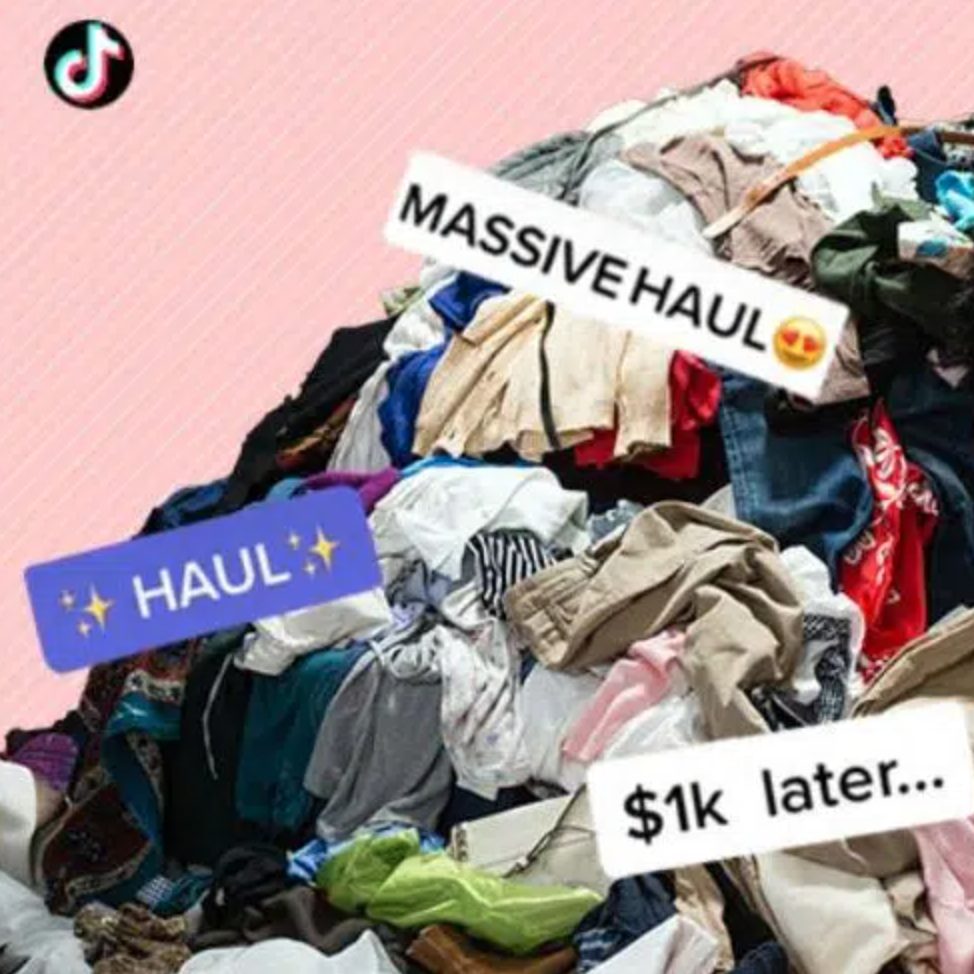
This week’s Twitter controversy started, as they all do, with a viral tweet. A few days ago, @sageyblanco tweeted: “we killing the planet for shein fits …. this is crazy.” Shein, an online fast fashion retailer founded in 2008, is often a target for web users. The company is routinely criticized for its low-quality clothes, murky labor practices, and how they incentivize overconsumption. Last year, the CBC found that some of Shein’s toddler jackets contain 20 times the amount of lead permitted under Canada’s health regulations. For many people, Shein represents the worst of capitalism, so it’s no surprise that @sageyblanco’s tweet quickly went viral (it currently has about 120k likes).
On Twitter, it’s an unwritten rule that any tweet, no matter how innocuous, will elicit criticism as soon as it gains widespread attention. “[We shop at Shein] because impoverished disabled people have nowhere else to go,” one user responded. “70% of co2 emissions are caused by 10 companies! but yes let’s blame poor people for wanting to have clothes!” another sarcastically replied. Others were more nihilistic. “The planet died in 2012 mama a couple crop tops not gonna do anything now.” Twitter user @nonbinarybooty summarized many of these sentiments in a thread. They recognized that people shouldn’t splurge on clothes weekly from one of the worst fast fashion labels. At the same time, they added, $40 is an outrageous price to pay for a shirt, thrifting has become inaccessible, and many clothing brands don’t even make clothes in larger sizes. “[W]ho the fuck in their right mind is going to spend $40 on ONE SHIRT where there exists a platform for someone to use the same $40 for 2-3+ whole outfits,” they tweeted. “BE SERIOUS.” (That tweet has also gone viral, racking up about 84k likes at the time of this post’s publishing).
Such defenses are nothing new. They appear from time to time in communities such as StyleForum and Reddit’s Female Fashion Advice, usually from members who believe that anti-fast-fashion sentiments are trendy and are used as a way for wealthier consumers to feel morally superior. This round, however, was a little different. Justifications for shopping at Shein were frequently couched in terms of social and economic justice. It’s said that overworked Americans have no other options because of the decline in real wages. They neither have the time nor money to look for better clothing. Consumers, particularly those from marginalized communities, should not be held responsible for what’s inherently about capitalism. Fast fashion critics were accused of being classist, ableist, privileged, and insensitive to the realities faced by people who need larger sizes. They failed to recognize that some people live in “thrift market deserts,” where thrift stores either don’t exist, or they’ve been gentrified by young white women who resell their Goodwill finds at a profit, leaving low-income, people of color with nothing.
Is it actually classist to be against fast fashion? Do people not have other options? How can someone build a quality wardrobe without resorting to fast fashion retailers and not spending themselves in debt? Let’s work through the options.
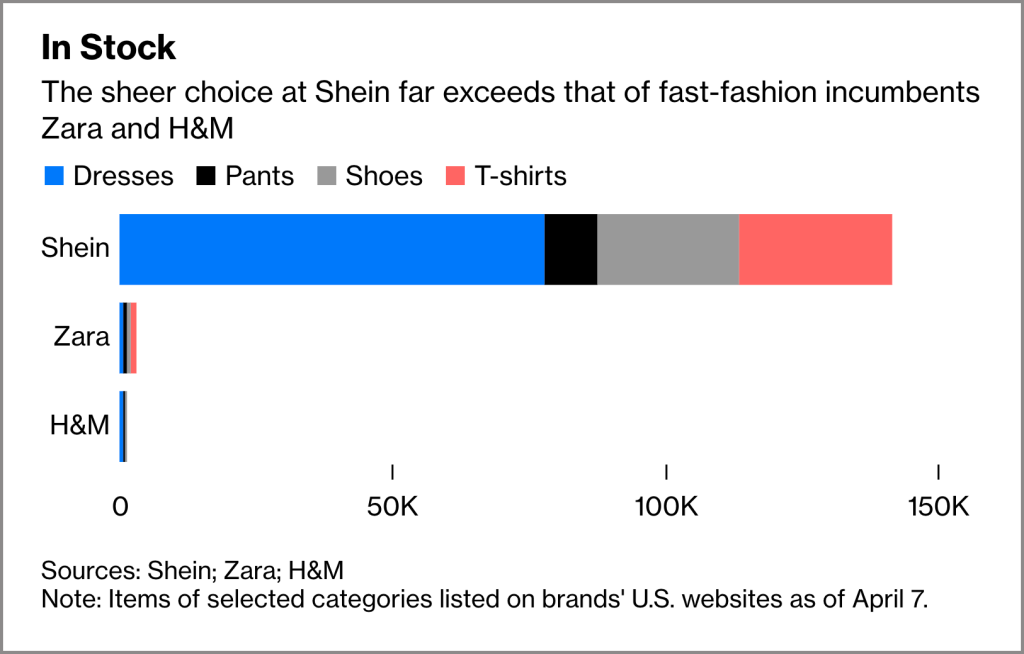
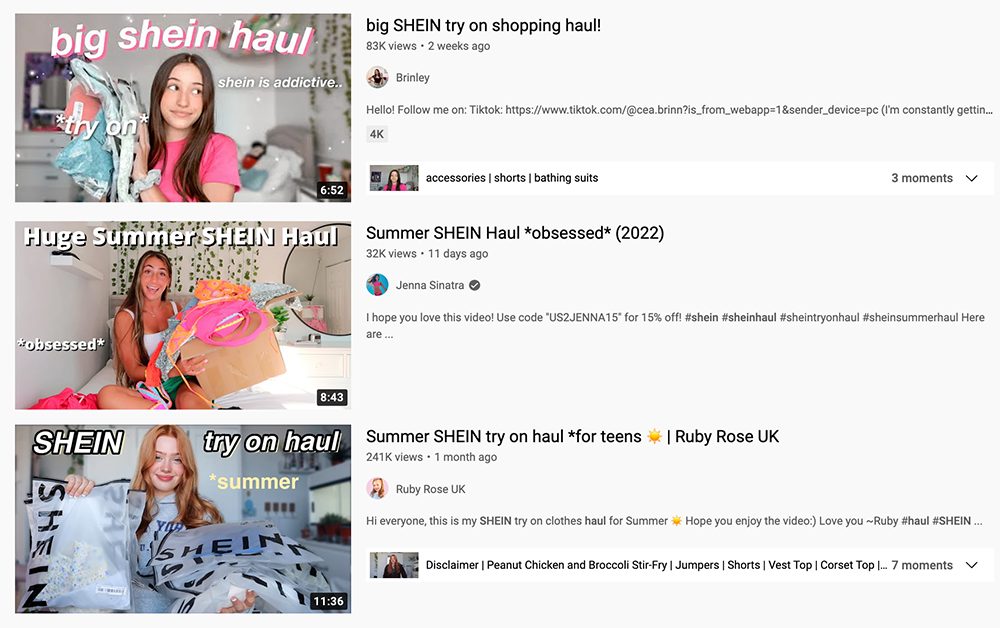
What is Fast Fashion?
First, let’s define fast fashion. Fast fashion is often misunderstood as cheap, mass-produced clothing. But that’s not the entire picture. Many companies sell cheap, mass-produced clothes but aren’t fast fashion (for example, Hanes, Dickies, Carhartt, LL Bean, Land’s End, and so on). Fast fashion isn’t just cheap clothing—it’s cheap and trendy clothing. The term “fast” refers to how a company brings a product to market.
Fast fashion grew out of quick response manufacturing (QRM), a production system developed in the United States during the 1980s and ’90s. In the traditional fashion business model, a company will design a collection for many months before producing samples to show to store buyers at an industry tradeshow. Once those store buyers place their orders, the brand will go into production and then deliver the units to these stores six months later. As a result, the lead time from design to delivery can be as long as a year, sometimes more.
In the 1980s and ’90s, a collaboration between US companies and research universities developed a new manufacturing system that allowed them to shorten that process, allowing US firms to remain competitive in a globalized marketplace. About a decade later, companies such as H&M, Zara, and Primark adopted those QRM technologies. They built them around even more efficient supply chains, typically relying on labor in low-cost countries, and combined them with enhanced product design capabilities, forming the foundation of today’s fast fashion system. Instead of a year, the process of developing, manufacturing, and delivering products could be completed in as little as six weeks. Retailers also developed a new inventory system that allowed them to stock fewer units. If they discovered that a specific jacket was selling exceptionally well in the middle of a season, they could quickly restock and respond to rapidly changing trends. Zara and H&M created a new system that allowed them to have up to 16 collections per year and two delivery schedules per week. The concept was to bring cheap, trendy items to market quickly—hence, fast fashion.
Shein has pushed this system so far down its developmental path, they’ve made Zara and H&M look like slow fashion retailers by comparison. “While Zara revolutionized the industry in the 2000s by narrowing clothing’s lead time from design to store to a matter of weeks, Shein can do that in days,” Lara Williams wrote for Bloomberg. “Even more unique is how it has combined a super-fast supply chain with blisteringly quick market research and customer acquisition.” Shein doesn’t just rip its designs off runways. They leverage big data using Google, their site, their competitors, and changes in social media to deliver what consumers want in real-time. They also sell clothes at much lower prices. According to Bloomberg, the median price for a dress at Zara is $49.99. At Shein, it’s a mere $13 (lower if we’re to use sales and promotions). The sheer choice at Shein dwarfs what you can find at retailers such s Zara and H&M, which were already giants in their day.
Who’s buying these clothes? Is it overworked, underpaid Americans who can’t afford to find better options? Since Shein is a privately held company (with plans to IPO in two years), no one knows except the company’s shareholders. However, Shein shopping haul videos are among the most watched on platforms such as TikTok and YouTube. A quick perusal suggests that it’s mostly young, middle-class consumers who are hungry to stay up-to-date on trends. If there are any fingerprints of overworked, underpaid people, they belong to the invisible garment workers who toiled to make these low-priced clothes.
(above graph via Bloomberg Opinion, April 2022; screenshots from YouTube)
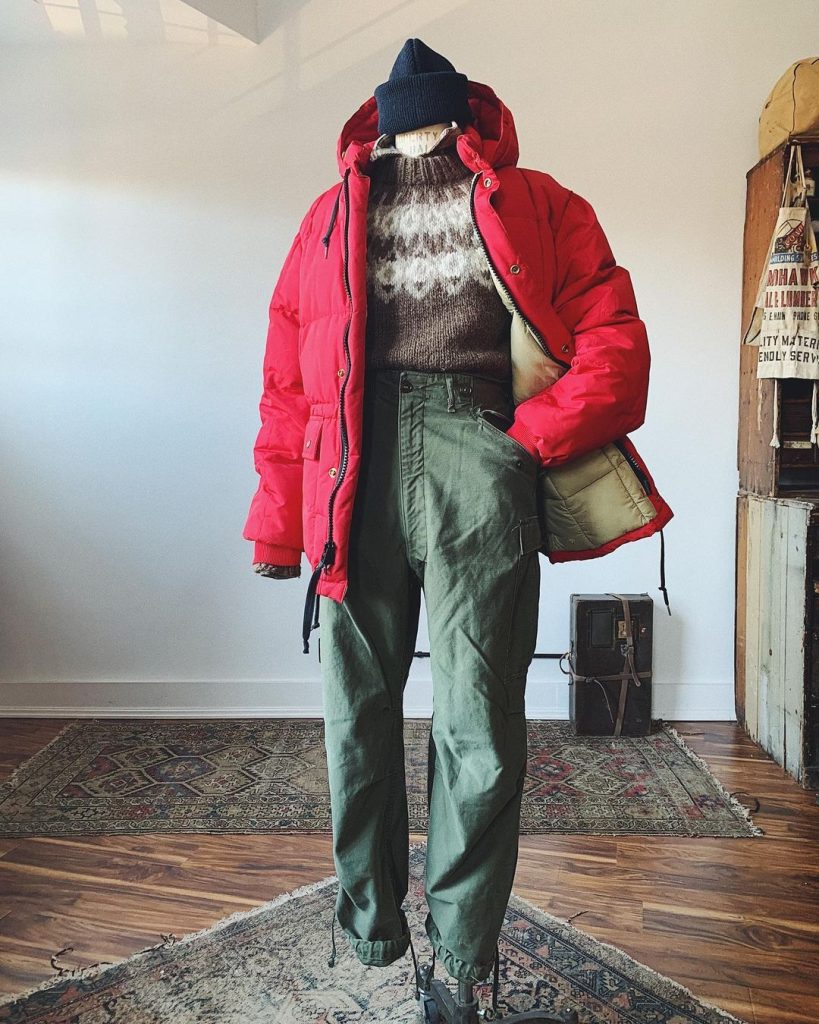
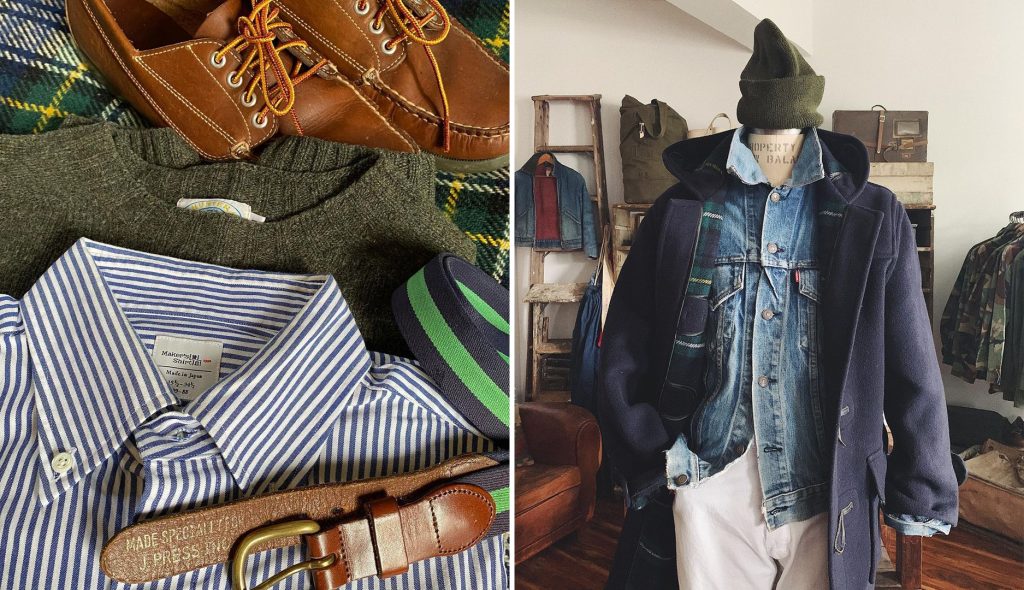
Building a Quality Wardrobe on a Budget
I suspect a lot of the language used to justify shopping at Shein doesn’t stem from bad intent, but just a lack of understanding of how to thrift or build a wardrobe outside of trends. True, fashion prices have rapidly outpaced inflation over the last ten years (with menswear prices leading the way). It also takes a little more effort to shop secondhand, as thrifting has grown in popularity, and thrift stores are more likely to be filled with low-quality cast-offs from the 1990s rather than quality garments from previous eras. But it is possible.
One of the problems with building a quality wardrobe today is that it’s not enough to find quality clothes that will last for many years. You’re dressing not only your body but also an identity and a lifestyle. The scope for these things is much larger today than two generations ago. People from vastly different backgrounds will have very different requirements. This is what makes writing about men’s clothing so challenging.
For example, I could suggest that you build a wardrobe around affordable American basics. You can find vintage Shetland knits on eBay for about $25—the same price as Shein’s knitwear, but better made—by searching for the terms “Shetland,” “Scottish,” and “Scotland” and clicking “include descriptions.” Shetlands are hardwearing sweaters, so they’re likely to be in good condition even if they’re vintage. You can also search eBay for Brooks Brothers MiUSA oxford button-downs and under-the-radar British shoes. Durable chinos from Bronson and Duck Head can be had for as little as $40. LL Bean, Lands End, and Spier & Mackay are also all good sources for these sorts of clothes. Remember, the people who used to make up the online Ivy-style community were almost never Old Money WASPs. They were frequently just ardent thrifters who knew how to spot quality and build wardrobes on a budget. For inspiration, check out the guys behind An Affordable Wardrobe and Glengarry Sporting Club.
(above photos via Glengarry Sporting Club and Wooden Sleepers)
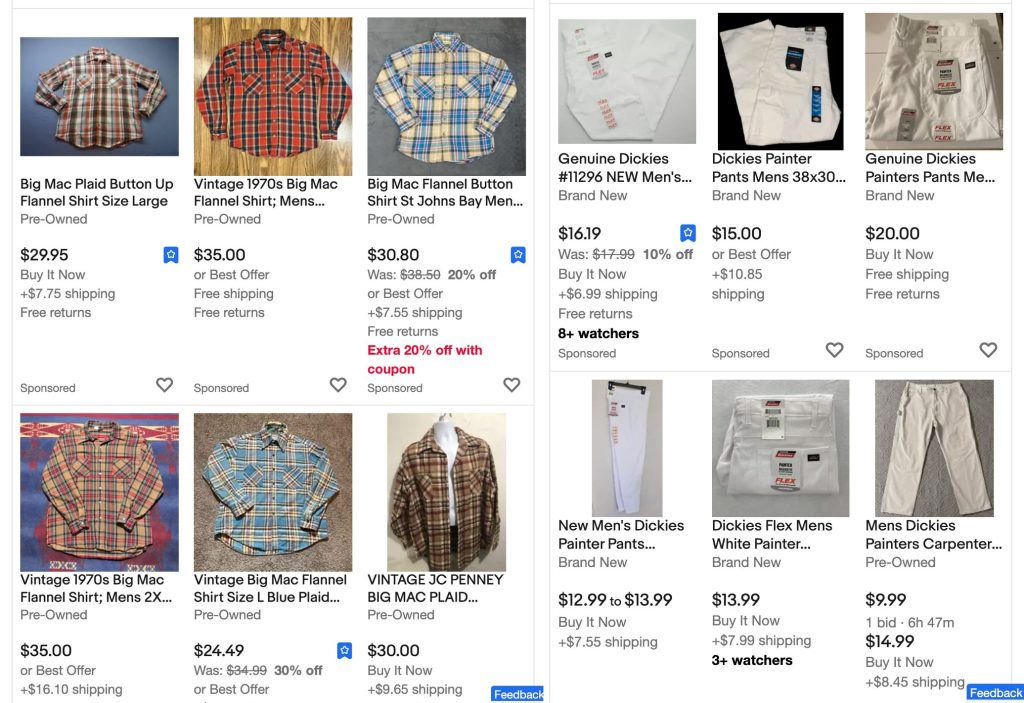
You may find that classic American style too conservative for your liking. Perhaps you prefer clothes that are a little more rugged. If so, search eBay for heavyweight flannel shirts from brands such as Big Mac, Big Yank, Big Mike, Five Brothers, and Frostproof. Pick up a pair of secondhand jeans or a denim jacket from Levis (the MiUSA versions are often better than the ones made today). Get a used French chore coat. Buy shoes from Vans and Converse. Get a pair of Dickies painter pants, 874 work pants, Carhartt double-knees, or Rothco vintage chinos. All of these options will be just as cheap as what you can find at Shein, but better made, and they can be styled in a workwear or streetwear manner, depending on your preference.
I can’t go through every possible aesthetic and list the various options that would make up such a wardrobe. But keep in mind that fast fashion retailers are ripping off runway designs, which are frequently inspired by the affordable, often thrifted clothes that cool people wear. Certain aesthetics, to be sure, necessitate deep pockets. You have to pony up if you want fine Italian tailoring or a Rick Owens wardrobe. However, generations of working-class people have dressed well in the past, and their clothing can still be found in thrift stores. Look to the past for inspiration—workwear, grunge, punk, skate, hip hop, musicians, and artists. Develop an eye for how to dress well without following trends. Choose an aesthetic that works well with secondhand clothes (e.g., workwear, which ages well with time). This will give you some early successes with thrifting and creating outfits, which will keep you encouraged in the process.
(above screenshots from eBay showing Big Mac flannels and Dickies painter pants)
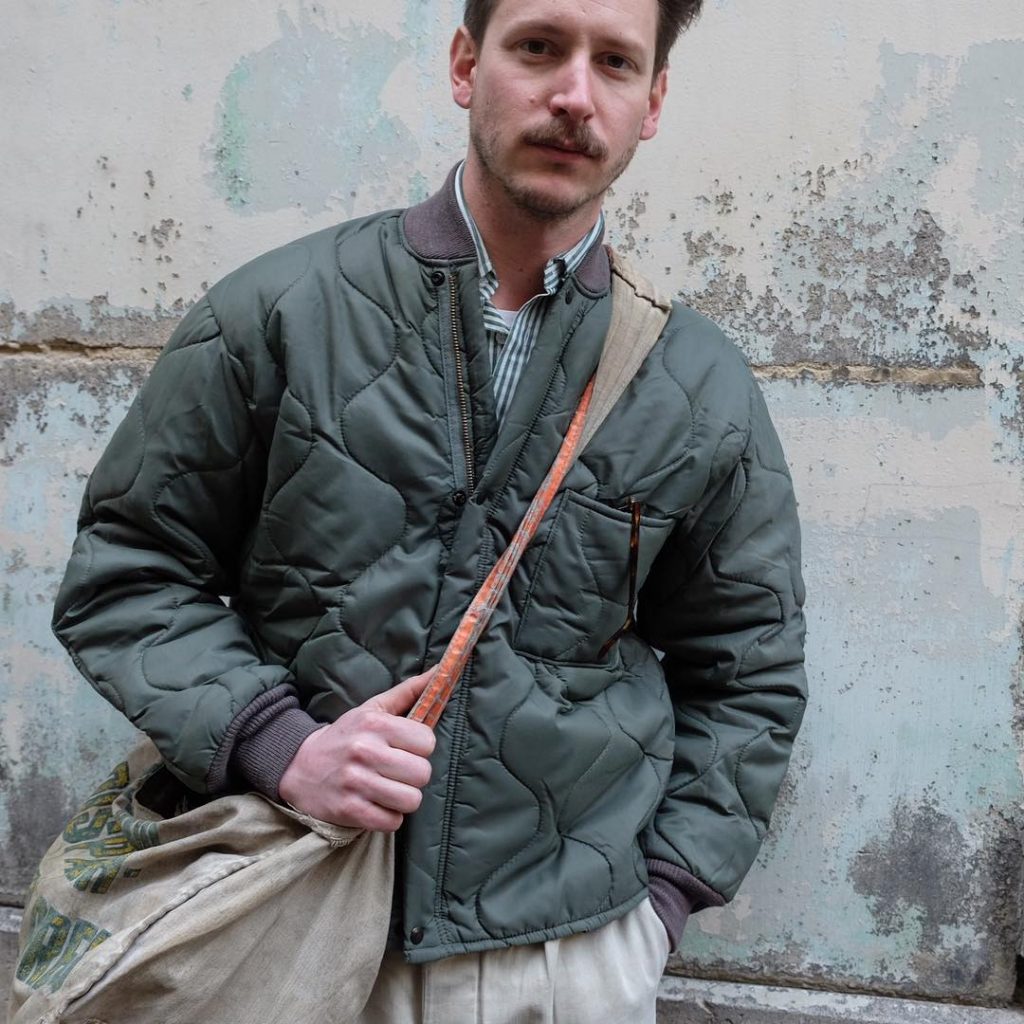
Some Other Ideas
Find Value-Focused Brands: The problem with fast fashion is that the design is more likely to wear out before the seams, which is why so many of these garments are discarded before they reach the end of their useful life. Keep in mind that not all low-cost clothing is fast fashion. Consider Hanes, Levi’s, LL Bean, Lands’ End, Camber, Clarks, Timberland, Converse, Vans, Wrangler, Lee, Blundstone, Uniqlo, and Carhartt for more timeless designs. We also have a multi-part series on where to find value-focused brands.
Check Military Surplus Depots: For generations, military surplus depots have been a source of cool clothes for budget-conscious consumers, including the 1970s counter-culture youths who stuck a bohemian pose and razzed the American warmongering machine while wearing M65 army jackets. Check these depots for military field jackets, fatigues, peacoats, and rugged bags. And don’t forget to browse other countries’ stock. Post-war German cargo pants and Army sneakers are great. French army paratrooper bags have been on my shopping list forever (check measurements—these are big). I also like wearing military liners as standalone outerwear.
Thrifting: Thrifting is becoming more difficult these days, but you can still build a wardrobe from thrift store finds. (After only two minutes of looking, I found a $5 Beams-like shirt at a thrift shop a few days ago.) Look for stores that are clustered together so you can take a route and visit multiple locations. Avoid stores in cool neighborhoods and near students, who will have cleaned them up. All the better if you can find thrift stores in upscale neighborhoods or ritzy charity shops with a wealthy donor base (rich people donate nice clothes). Local institutions such as the opera or symphony, as well as private schools or civic organizations, are good bets. Although I’m not a fan of reducing the quality of clothing to country of origin tags, if you’re new to thrifting, looking for older items made in the US, UK, or Italy is often a good way to ensure you’re buying something of quality. Go thrifting on a regular basis, and pay attention to how often stores rotate through their stock. But also be prepared to not always come home with a great find. Thrifting is one of those things where you have to love the process, so the activity becomes leisure, not work. More tips can be found in our thrifting guide.
(above photo via Brut Clothing)
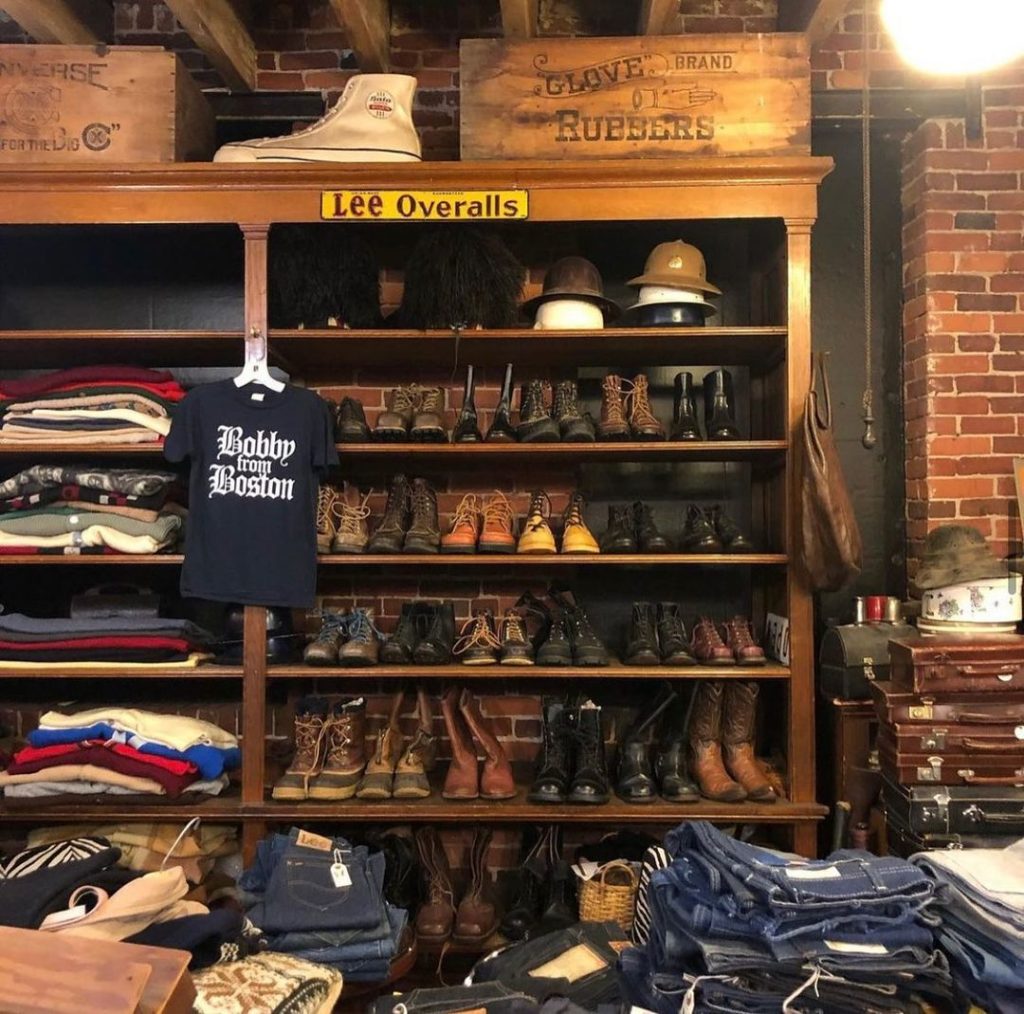
Consider Curated Shops: Not everyone enjoys the thrifting experience. If you want a more curated selection, visit Bobby from Boston, Wooden Sleepers, Raggedy Threads, Mothfood, Velour, The Goody Vault, and Brut Clothing. The prices will be higher than at Goodwill, but they will have done all of the work for you in terms of finding, repairing, and cleaning high-quality vintage clothing. In terms of selection, each store has its own “taste.” Finding the right curated shop can save you time and money.
Buy Less, Buy Better: The phrase “buy less, buy better” used to be the mother’s milk of menswear writing. It’s been so overused, that it has almost lost all meaning. But I still believe in it. You’ll be happier with one high-quality garment, even purchased at a higher price, than five low-quality ones that you purchased at a “steal.”
You Don’t Need Much: Keep in mind that you don’t need much to build a wardrobe. In the United States, we’re accustomed to the concept of large closets crammed with countless options. However, in Paris, where people of all backgrounds dress stylishly, many make do with much less. This is due in part to the fact that Parisian homes are much older, built during a time when people typically only had a few things to wear. About eight years ago, I interviewed a reader named Brian, who was based in the French capital at the time. He was extremely stylish, but he only owned two pairs of jeans, one pair of black trousers, two textured sweaters, a few t-shirts, a few button-up shirts, two pairs of suede boots, one pair of sneakers, and a few coats. Despite his minimalist wardrobe, he was able to mix and match to create a variety of outfits because he carefully planned his purchases, ensuring that each piece fit into a cohesive scheme. Looking back at that post, I still think he’s stylishly dressed almost ten years later. If you avoid trends, purchase good clothes, and shop within your budget, you can also look back at decade-old photos and be happy with your purchases.
Know How to Get Things Tailored: As always, knowing what can be tailored will help you find clothes that fit. The general rule is that tops should fit across the shoulders and chest, with most other details being negotiable. Pants must also fit well around the thighs, seat, and rise (tapering the legs or taking in the waist is easy). Knowing your own fit issues and how to work around them, as well as the capabilities of your local alterations tailor, will help you find clothes that fit, even in larger sizes.
Visit Our Archive: Put This On has been around for over ten years, and we have a massive archive of posts about how to shop on a budget (that has always been an underlying ethos for our site). Check out our Best Of, Guides, and Start Here sections. Yes, shopping for a high-quality wardrobe will take time or money. The old adage “good, fast, cheap—pick two” still holds true. But in the end, you’ll be happier with your wardrobe. Begin with this post by Jesse about his mother, who knows how to shop effectively. I still believe that knowledge, not money, is the key to good style.
(above photo via Bobby From Boston)
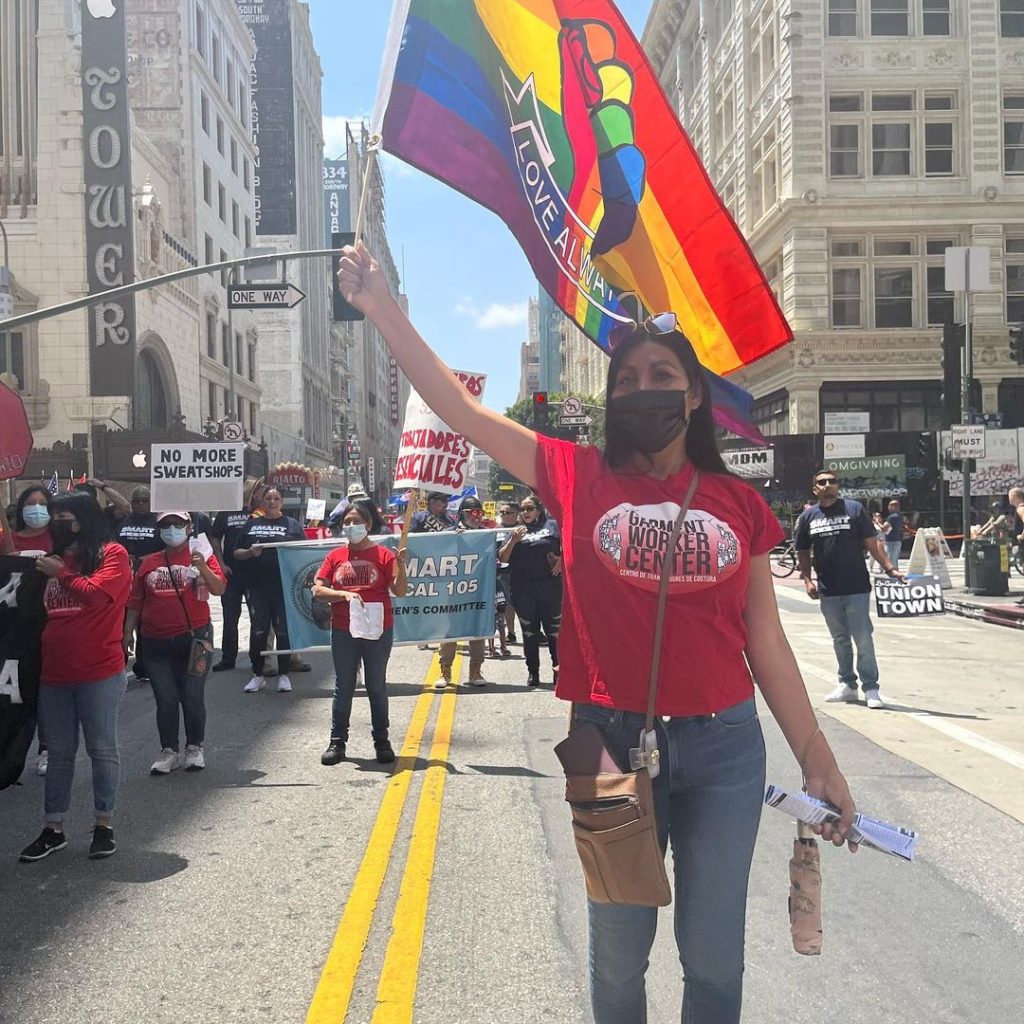
A Note About Economic Justice
I want to end with a comment about this language used to defend fast fashion. In the last ten years, many people have become increasingly aware of the social, economic, and racial inequalities that pervade American society. I think that’s good, as awareness is the first step towards fixing these issues. It’s true that we’ve seen a decline in real wages, and that fashion companies don’t always create sizes that fit everyone. It’s also true that many working-class Americans can’t afford to buy LL Bean or spend hours shopping at thrift stores.
But I don’t think the answer is to shop from companies such as Zara, H&M, or Shein. I’m not a nationalist, so I’m fine with importing goods and creating jobs overseas. But not bad jobs. Not only do fast fashion brands create bad jobs, sometimes resulting in building collapses on innocent garment workers, but they also lower wages across the entire garment industry. Last year, when California was still on a piece-rate system, Los Angeles garment workers earned an average of $5.15 per hour—well below the legal $15/ hour minimum wage. In the US, this industry mostly employs Latino, Afro-Caribbean, and Southeast Asian workers, many of whom are first-generation immigrants. Many issues afflict these workers’ labor conditions, some structural. However, one significant factor is the low cost of fast fashion imports. When consumers can buy a $12 shirt from Shein, they begin to believe that a $40 shirt is overpriced, lowering wages even for garment workers who aren’t producing fast fashion. I understand that it can be difficult to build a quality wardrobe in this day and age, but fast fashion is creating the very poverty and racial inequality that Shein supporters use to justify their purchases. No one needs to look trendy. You can build a quality wardrobe and look stylish without worsening things for some of the most marginalized people in the world.
During the depths of the Great Depression, First Lady Eleanor Roosevelt wrote It’s Up to the Women, urging women to play a role in cutting costs where necessary, spending wisely, and taking personal responsibility for lifting the country out of its abyss. She even provided some fashion advice in the book:
Do not think, however, that the price which you pay for clothes means a well-dressed or a poorly dressed woman. A ten-dollar dress, if you have good taste, may be just as pretty as one for which you have spent ten times as much. I have seen women who spend very small amounts on their clothes but who plan them carefully, frequently look better-dressed than women who waste a great deal of money and buy foolishly and without good taste.
The price of a garment is not always indicative of its real worth nor is it indicative of whether you are buying something that has been made under sweat shop conditions or not. This is a phase which even the poorest, in planning a clothes budget, should consider, for no matter what we can afford to buy, we cannot afford to buy at the expense of the health and strength of our fellow human beings. When you budget for your clothes remember to find out where you can buy economically but safely for your own health as well as for that of the workers.
(above photo via Garment Worker Center)







